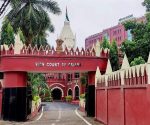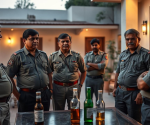Debrigarh emerges as top eco-tourism destination | Bhubaneswar News

Bhubaneswar: Debrigarh wildlife sanctuary has emerged as a leading wildlife tourism hub among other prominent eco-tourism hotspots in the state, generating a record Rs 5.11 crore revenue in the 2024-25 financial year. The sanctuary was visited by 85,000 tourists during the year, with 9,000 visitors availing themselves of the night stay at the nature camp. Similipal Tiger Reserve took the second spot with Rs 3.73 crore revenue.
Wildlife officials said among the annual visitors were two per cent foreigners, 48 per cent from outside the state, and 50 per cent from within the state. Altogether, 27,000 tourists availed themselves of the jungle safari. More than 12,000 visitors enjoyed the Hirakud cruise, a delightful boating experience in the Hirakud reservoir. Also, 5,000 tourists visited Island Café, and around 10,000 tourists purchased various articles from the souvenir shop of Debrigarh.
“Overall, there was a 40 per cent increase in tourist footfall at the sanctuary compared to last year in jungle safari, cruise, and night stay. In view of the surge in tourist footfall, Debrigarh management issued jungle safari etiquette, formulating a standard operating procedure (SOP) for tourists, guides, safari drivers, and frontline staff, enhancing animal sighting without disturbance. The new SOP can also add to visitors’ comfort,” said Anshu Pragyan Das, divisional forest officer, Hirakud wildlife division.
Officials said Debrigarh, being a category-B wildlife sanctuary with less than 500 sq km area and an ever-increasing population of prey as well as leopards, required the implementation of an SOP for both wildlife and tourism in the Debrigarh landscape to regulate tourism. According to the SOP, the 15 km forest road inside the eco-tourism zone from zero point entry gate up to Parbatitung shall only be used for jungle safari between 6 am and 6 pm daily. In terms of vehicular movement in the entire Debrigarh sanctuary, the wildlife wing has fixed the carrying capacity of vehicles at 53 per day. Entry of only 318 visitors on a given day is allowed.
“We have fixed the maximum permissible speed of safari vehicles at 20 kmph. Forenoon tentatively 27 safari vehicles and afternoon 26 safari vehicles shall ply for safari in four slots. No overcrowding or congestion of safari vehicles will be allowed,” Das added. She said the minimum distance between two safari vehicles shall be maintained at 500 metres to avoid congestion.
Sanctuary authorities said significant steps have been taken to ensure zero plastic litter and the use of plastic carry bags and water bottles. This has been possible due to relocation of all villages that were inside the sanctuary.
Wildlife officials said among the annual visitors were two per cent foreigners, 48 per cent from outside the state, and 50 per cent from within the state. Altogether, 27,000 tourists availed themselves of the jungle safari. More than 12,000 visitors enjoyed the Hirakud cruise, a delightful boating experience in the Hirakud reservoir. Also, 5,000 tourists visited Island Café, and around 10,000 tourists purchased various articles from the souvenir shop of Debrigarh.
“Overall, there was a 40 per cent increase in tourist footfall at the sanctuary compared to last year in jungle safari, cruise, and night stay. In view of the surge in tourist footfall, Debrigarh management issued jungle safari etiquette, formulating a standard operating procedure (SOP) for tourists, guides, safari drivers, and frontline staff, enhancing animal sighting without disturbance. The new SOP can also add to visitors’ comfort,” said Anshu Pragyan Das, divisional forest officer, Hirakud wildlife division.
Officials said Debrigarh, being a category-B wildlife sanctuary with less than 500 sq km area and an ever-increasing population of prey as well as leopards, required the implementation of an SOP for both wildlife and tourism in the Debrigarh landscape to regulate tourism. According to the SOP, the 15 km forest road inside the eco-tourism zone from zero point entry gate up to Parbatitung shall only be used for jungle safari between 6 am and 6 pm daily. In terms of vehicular movement in the entire Debrigarh sanctuary, the wildlife wing has fixed the carrying capacity of vehicles at 53 per day. Entry of only 318 visitors on a given day is allowed.
“We have fixed the maximum permissible speed of safari vehicles at 20 kmph. Forenoon tentatively 27 safari vehicles and afternoon 26 safari vehicles shall ply for safari in four slots. No overcrowding or congestion of safari vehicles will be allowed,” Das added. She said the minimum distance between two safari vehicles shall be maintained at 500 metres to avoid congestion.
Sanctuary authorities said significant steps have been taken to ensure zero plastic litter and the use of plastic carry bags and water bottles. This has been possible due to relocation of all villages that were inside the sanctuary.
















